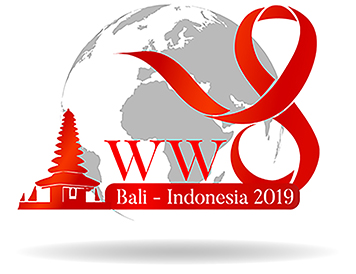I Nyoman Gede Juwita Putra1, Irna Sufiawati2, Yovita Hartantri
Oral Medicine, University of Padjadjaran, Bandung, West Java, Indonesia
Internal Medicine, University of Padjadjaran, Bandung, West Java, Indonesia
Abstract
Objective. The purpose of this case report is to describe the occurrence of Kaposi's sarcoma (KS) with secondary Candida infection in patients with AIDS.
Case and Management. A 23year-old male was referred from the tropical diseases and infection division of the Department of Internal Medicine to the oral medicine division with the complaint of a lump on the palate which appeared 3 months ago: a similar lump had first appeared on the right belly and had increased in size over time. The patient also displayed white patches throughout the oral cavity.
An extraoral examination revealed the presence of multiple purplish/red plaques on the face and several parts such as the hands and belly, as well as ulcerative lesions at the corners of the left lip which felt sore when the mouth was opened. Intraoral examination showed the presence of purplish red plaques on the palate and gingiva, and white plaques throughout most of the oral cavity.
Microbiological examination demonstrated the presence of yeast in the oral cavity. Based on histopathological examination this patient was diagnosed with Kaposi's sarcoma and based on microbiological examination this patient was diagnosed with oral candidiasis, ulcers, oral thrush also angular cheilitis.
The patient was prescribed nystatin oral suspension 4 times a day and a topical miconazole gel. The white plaque in the oral cavity disappeared on day 12, five days after starting miconazole therapy. The epithelial surface in HIV infection associated with Kaposi's sarcoma shows secondary Candida infection with various levels of tissue invasion. The literature shows that as many as 40.6% of patients with HIV-Kaposi's sarcoma suffer from secondary Candida infections. Candida infection regardless of severity rarely reaches the lamina propria by penetration through the epithelium. In the single case where the organism penetrated connective tissue and Kaposi's Sarcoma tissue, it entered through the necrotic ulcerated surface, and not through the intact epithelium.
Conclusion. Secondary Candida infection in patient with HIV-Kaposi's sarcoma is commonly infected with large numbers of Candida organisms.



